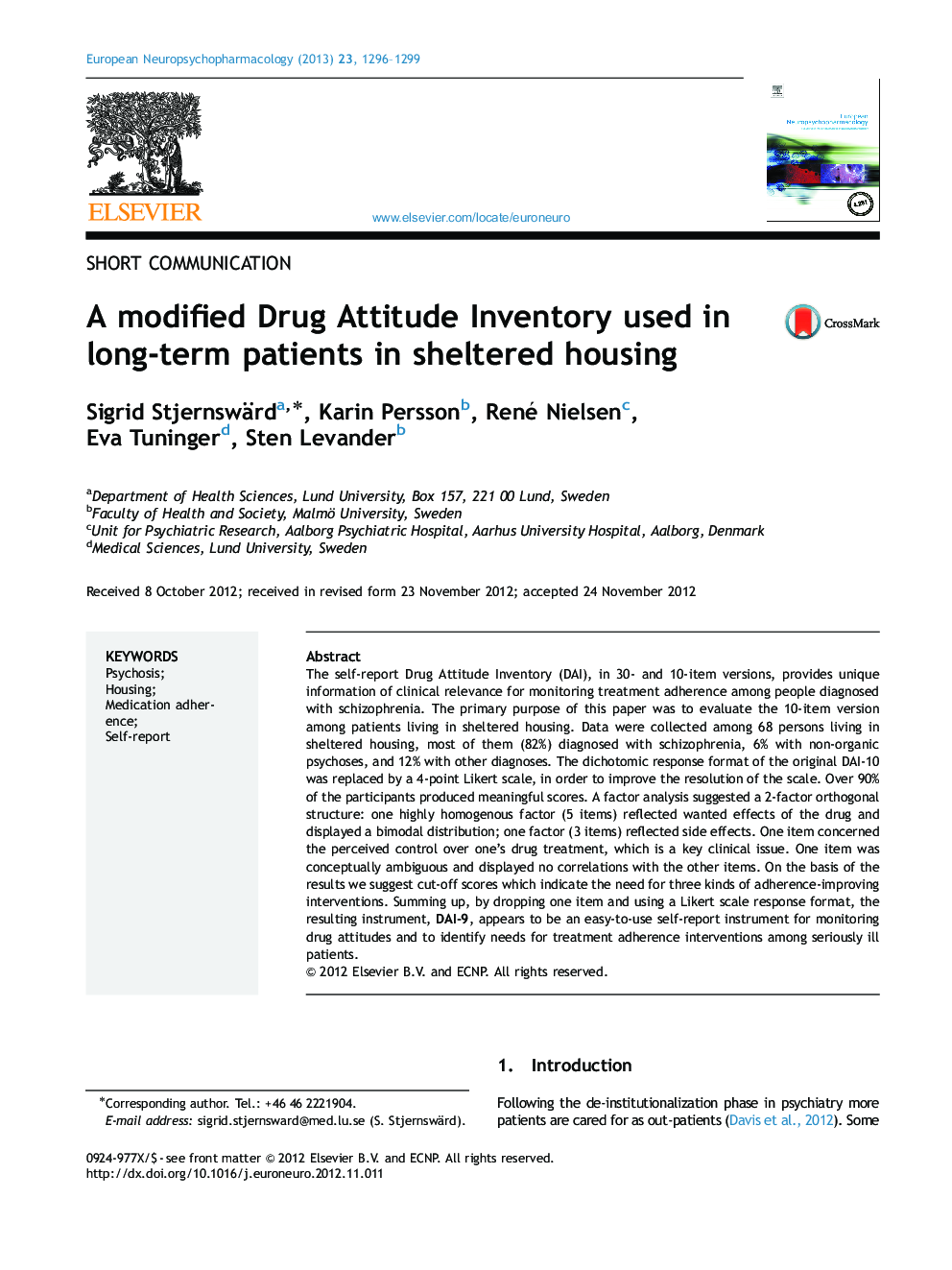| Article ID | Journal | Published Year | Pages | File Type |
|---|---|---|---|---|
| 10299183 | European Neuropsychopharmacology | 2013 | 4 Pages |
Abstract
The self-report Drug Attitude Inventory (DAI), in 30- and 10-item versions, provides unique information of clinical relevance for monitoring treatment adherence among people diagnosed with schizophrenia. The primary purpose of this paper was to evaluate the 10-item version among patients living in sheltered housing. Data were collected among 68 persons living in sheltered housing, most of them (82%) diagnosed with schizophrenia, 6% with non-organic psychoses, and 12% with other diagnoses. The dichotomic response format of the original DAI-10 was replaced by a 4-point Likert scale, in order to improve the resolution of the scale. Over 90% of the participants produced meaningful scores. A factor analysis suggested a 2-factor orthogonal structure: one highly homogenous factor (5 items) reflected wanted effects of the drug and displayed a bimodal distribution; one factor (3 items) reflected side effects. One item concerned the perceived control over one's drug treatment, which is a key clinical issue. One item was conceptually ambiguous and displayed no correlations with the other items. On the basis of the results we suggest cut-off scores which indicate the need for three kinds of adherence-improving interventions. Summing up, by dropping one item and using a Likert scale response format, the resulting instrument, DAI-9, appears to be an easy-to-use self-report instrument for monitoring drug attitudes and to identify needs for treatment adherence interventions among seriously ill patients.
Related Topics
Life Sciences
Neuroscience
Biological Psychiatry
Authors
Sigrid Stjernswärd, Karin Persson, René Nielsen, Eva Tuninger, Sten Levander,
